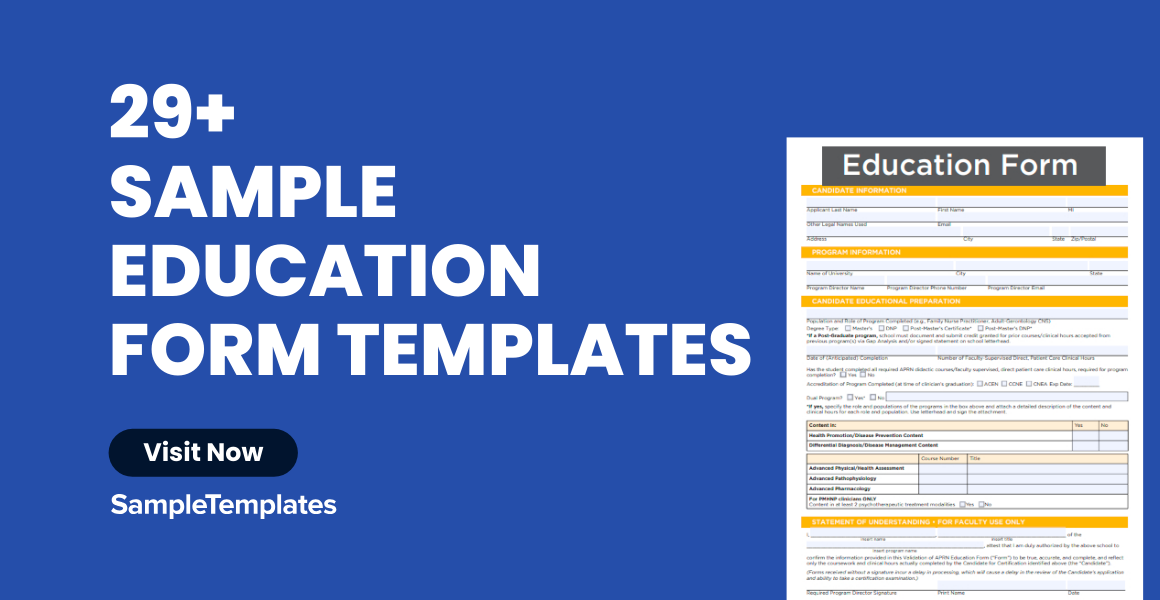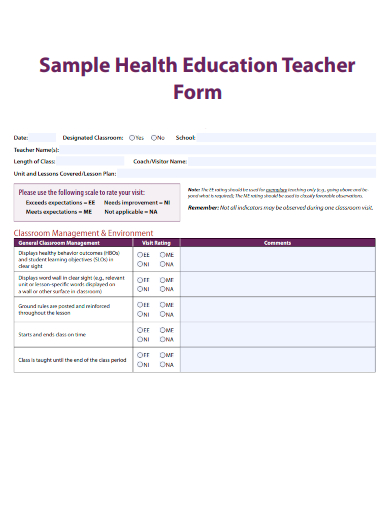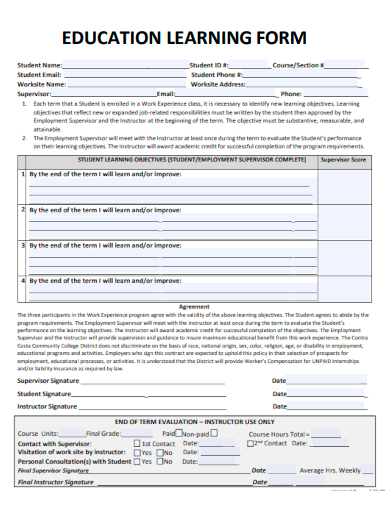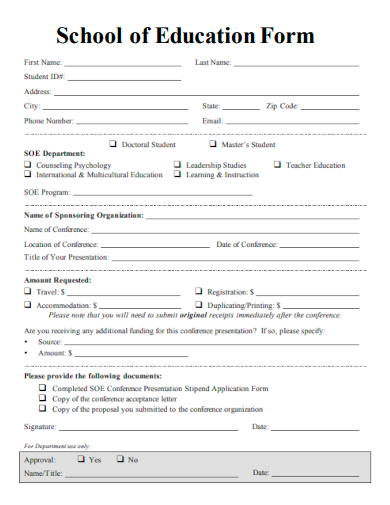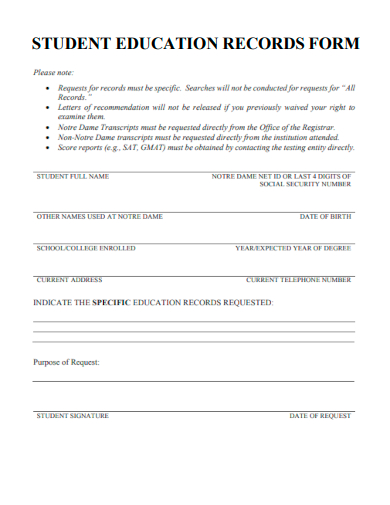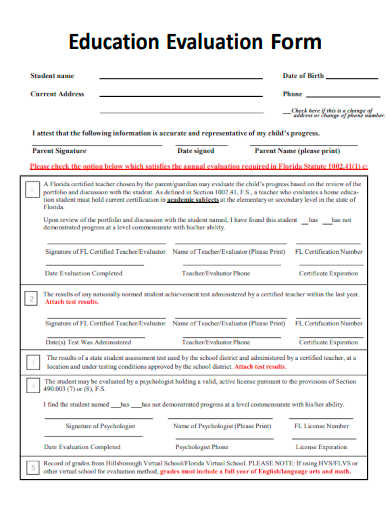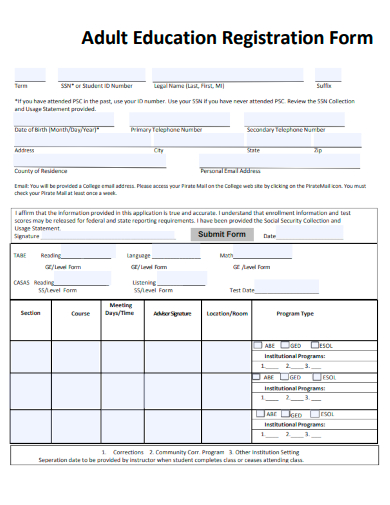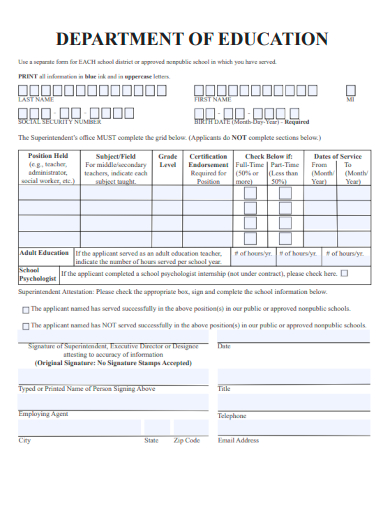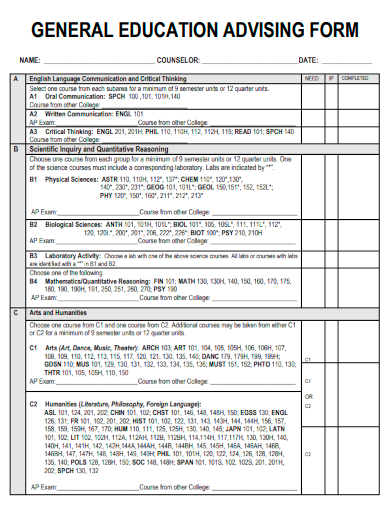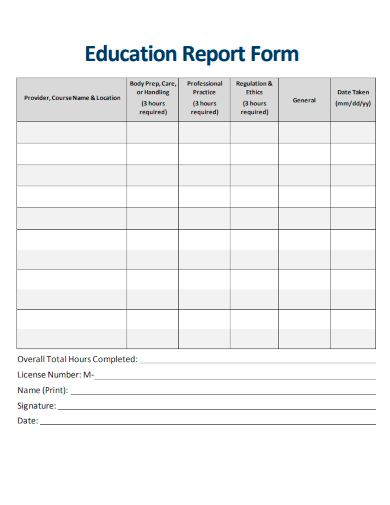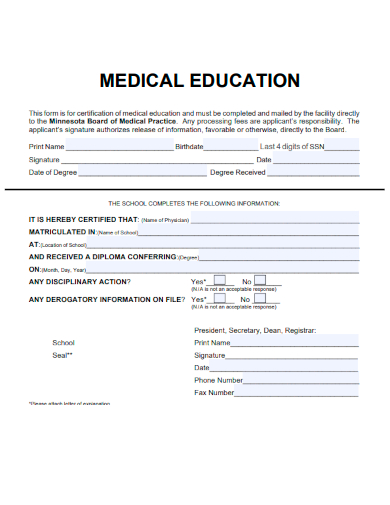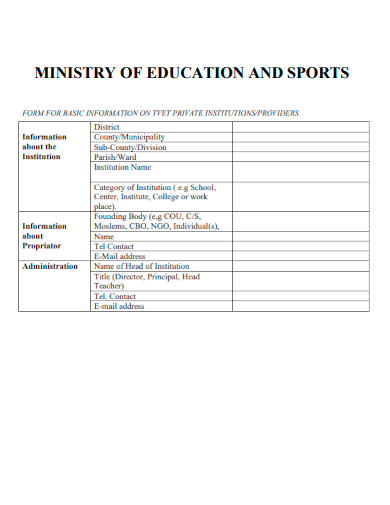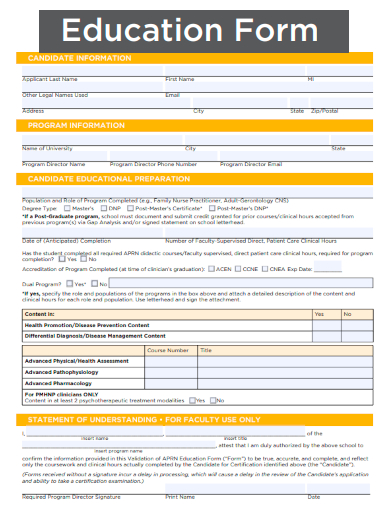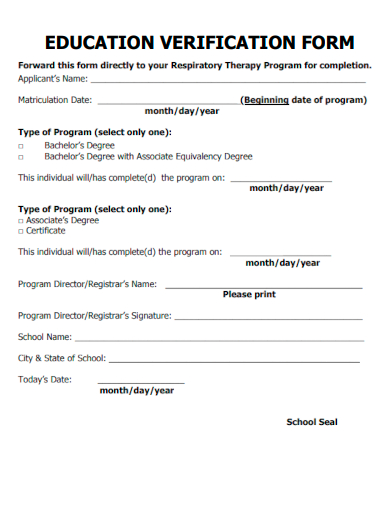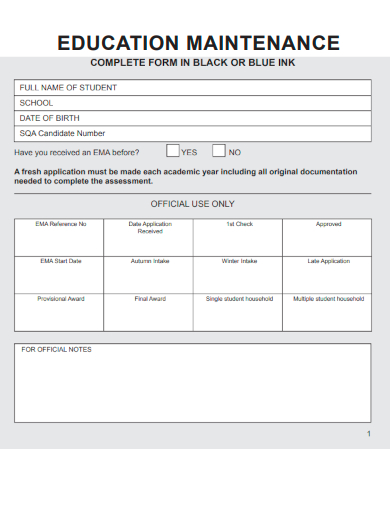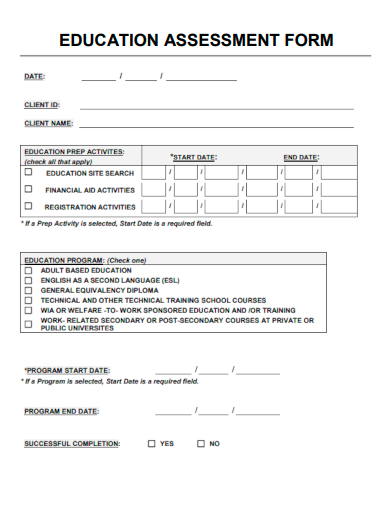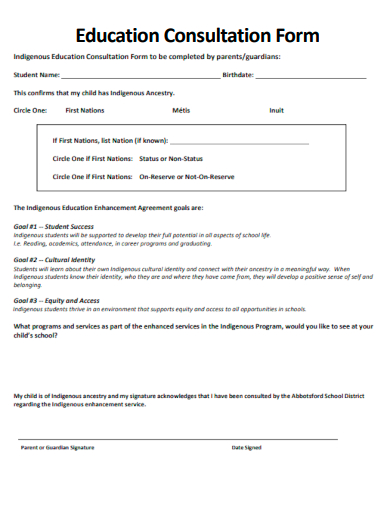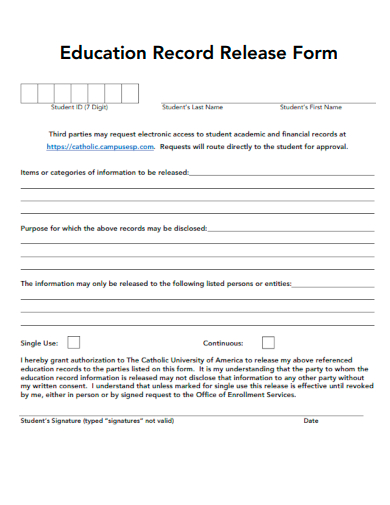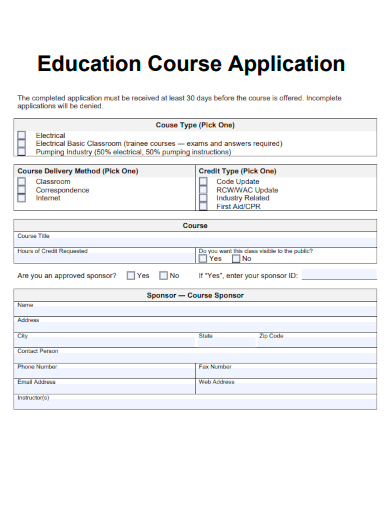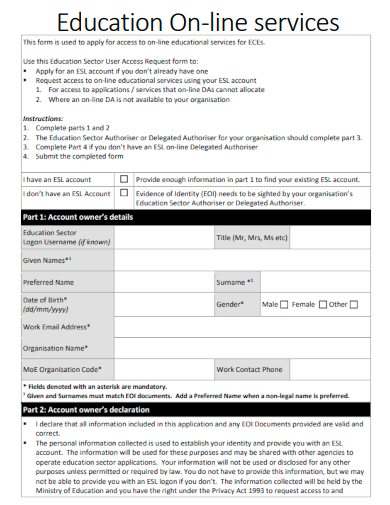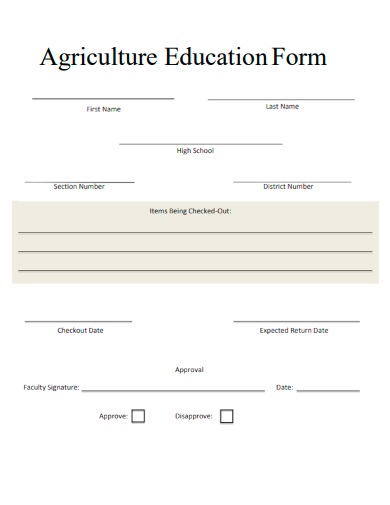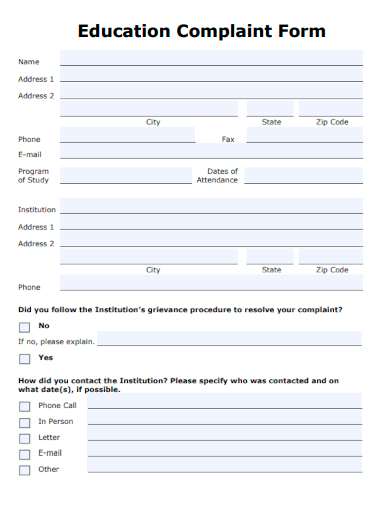Delve into our sample Education Form Template, meticulously designed to cater to the modern-day academic needs. Perfect for institutions, educators, and students alike, this template is the key to streamlining educational processes. Whether you’re enrolling, gathering feedback form, or seeking tailored resources, harness the benefits of a digital-first approach. Discover how our form elevates the learning experience and makes administrative tasks a breeze. Let’s transform education together!
FREE 29+ Education Form Samples
1. Sample Education Feedback Form Template
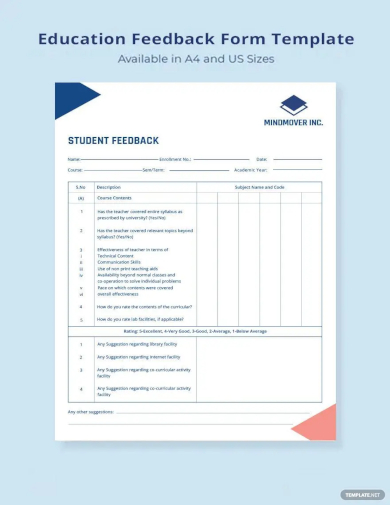
2. Sample University Application Form Template

3. Sample Health Education Teacher Form Template
4. Sample Education Learning Form Template
5. Sample School of Education Form Template
6. Sample Employee Education Program Form Template
7. Sample Student Education Record Form Template
8. Sample College of Education Form Template
9. Sample Education Evaluation Form Template
10. Sample Education Request Form Template
11. Sample Adult Education Registration Form Template
12. Sample Department of Education Form Template
What are forms in education?
Forms have always been an integral part of educational systems worldwide. They serve as a bridge between educators, students, and administrative bodies, ensuring efficient information flow and systematic organization.
The Role of Forms in the Educational Ecosystem
From the moment a student begins their academic journey to the day they graduate, forms play a pivotal role. For institutions, forms aid in the collection of data that can be crucial for decision-making. For students, they provide an organized way to submit information or requests.
Types of Educational Forms
Enrollment and Registration Forms: These are the initial forms filled out by students or their guardians to secure a spot in an educational institution. They typically collect basic information like name, address, previous educational background, and other personal details.
Feedback and Evaluation Forms: Often used by educators to understand the effectiveness of teaching methods, these forms can also be utilized by students to provide feedback on the learning experience.
Examination and Assessment Forms: These forms are used to record and evaluate a student’s performance in tests, assignments, and other evaluation metrics.
Permission and Consent Forms: Often used for excursions, lab experiments, or any activity that might carry a potential risk. They ensure that the institution has received consent from the student or their guardian.
Scholarship and Financial Aid Forms: These forms are essential for students seeking financial assistance. They often require detailed information about the student’s financial situation.
Benefits of Using Forms in Education
Efficiency and Organization: With the systematic use of forms, educational institutions can quickly process, analyze, and store vast amounts of data.
Transparency: It provides a clear record of all interactions, ensuring transparency between students, educators, and administrative bodies.
Tailored Learning: Feedback forms, in particular, allow institutions to adapt and provide a more customized learning experience for their students.
How do you create an education form?
Creating an educational form, whether it’s for registration, feedback, or any other purpose, requires careful thought to ensure that it’s user-friendly, efficient, and serves its intended purpose.
Understanding the Purpose
Before you begin designing the form, it’s imperative to understand its primary function. Are you trying to collect data for new enrollments? Or is it a feedback form to understand course effectiveness?
Choose the Right Platform
There are numerous platforms and software available for form creation. While traditional paper forms are still in use, digital forms have become increasingly popular. Tools like Google Forms, SurveyMonkey, and Typeform can help in creating and disseminating forms online.
Designing the Form
Keep it Simple: The layout should be intuitive. Make sure it’s not too cluttered and that it’s easy to navigate.
Clear Instructions: Every section of the form should come with clear instructions, ensuring that the user knows exactly what is expected.
Relevant Questions: Ensure all questions are pertinent to the purpose of the form. Avoid unnecessary questions as they can make the form lengthy and deter people from filling it out.
Include Multiple Choice Questions: Where possible, include multiple-choice questions as they are quicker to answer and easier to analyze.
Ensure Privacy: Especially when dealing with personal information, ensure that the data is kept confidential and that the user is aware of how it will be used.
Testing the Form
Before officially releasing the form, test it among a smaller group. This can help identify any potential issues or areas of confusion.
Feedback and Iteration
Once the form is in use, gather feedback to understand if there are any areas of improvement. Continually iterate based on this feedback to ensure the form remains efficient and relevant.
Incorporating Digital Features
With digital forms, you can incorporate features like skip logic, where the form adjusts the questions based on previous answers, making the form-filling process smoother for the user.
Storing and Analyzing the Data
Once the data has been collected, it’s crucial to store it securely. Digital forms usually come with analytics features, making it easier to process and analyze the data, providing valuable insights.
Remember, the primary aim of any form in the educational sector is to make processes smoother, more transparent, and efficient for both the institution and the students.
13. Sample General Education Advising Form Template
14. Sample Education Report Form Template
15. Sample Education Admissions Form Template
16. Sample Education Academic Form Template
17. Sample Medical Education Form Template
18. Sample Education Certificate Order Form Template
19. Sample Ministry of Education & Form Template
20. Sample Education Printable Form Template
21. Sample Education Verification Form Template
22. Sample Education Maintenance Form Template
23. Sample Education Assessment Form Template
24. Sample Education Consultation Form Template
25. Sample Education Record Release Form Template
26. Sample Education Course Application Form Template
27. Sample Education Online Services Form Template
28. Sample Agriculture Education Form Template
29. Sample Education Complaint Form Template
30. Sample Home Education Form Template
Where are Education Forms Used For?
Education forms have been quintessential tools across various facets of the academic sector. Their usage spans diverse functions, ensuring smooth operations, efficient data collection, and effective communication. Here’s an in-depth look into the specific areas where education forms are employed:
Admissions and Onboarding
The first interaction that many students and their families have with an educational institution often involves filling out enrollment or registration forms. These capture essential details and help institutions organize and process new admissions efficiently. This procedure sets the stage for a student’s entire academic journey at that particular institution.
Academic Evaluations
From weekly tests to annual examinations, assessment forms record and track a student’s academic progress. These tools are pivotal in gauging understanding, identifying areas of improvement, and ensuring that learning objectives are met.
Administrative Processes
Behind the scenes, educational institutions are a hive of activity. Administrative forms streamline operations, from managing finances and resources to scheduling events and maintaining infrastructure. For instance, requisition forms might be used to request classroom supplies, or facility booking forms can be employed to reserve venues for special events.
Student Feedback and Course Improvement
Feedback forms offer students a voice. By sharing their experiences, students can contribute to course improvements, teacher evaluations, and even influence institutional policies. This feedback loop ensures that education remains dynamic, adapting to the needs and preferences of its learners.
Health and Safety Protocols
Safety in educational settings is paramount. Medical forms capture students’ health histories, ensuring that institutions are prepared for any eventualities. Similarly, permission slips ensure that guardians are informed, and their consent is obtained for activities, especially those that might involve potential risks, such as field trips or certain lab experiments.
Financial Assistance
Making education accessible is a priority for many institutions. Scholarship and financial aid forms enable deserving students to obtain monetary support, ensuring that financial constraints don’t hinder learning opportunities.
Alumni Relations
Even after students graduate, many institutions aim to maintain a strong connection with their alumni. Alumni registration forms help track the whereabouts and achievements of former students, facilitating events, reunions, and even fundraising activities.
Special Education and Individual Plans
Every student’s learning journey is unique. For those with special needs, tailored forms like the Individualized Education Program (IEP) capture specific goals, challenges, and accommodations required. These forms are pivotal in ensuring that every student receives the best possible education tailored to their individual circumstances.
Extracurricular and Club Activities
Beyond the classroom, learning continues in various clubs, societies, and extracurricular activities. Membership forms, event registration sheets, and activity feedback forms play a role in organizing these additional facets of the educational experience.
Research and Development
In higher education settings, especially universities, research forms capture essential data for projects, thesis submissions, and even grant applications. They streamline the research process, ensuring compliance with institutional and ethical standards.
Education forms, with their varied applications, ensure that institutions run like well-oiled machines. Their presence might often be behind the scenes, but their impact is profound, shaping experiences, driving decisions, and ensuring the smooth sail of the vast ship of education.
Related Posts
Parent Consent Form Samples & Templates
Sample Release of Liability Forms
Sample Training Feedback Forms
Sample Sworn Affidavit Forms
Agreement Form Samples & Templates
Vehicle Inspection Forms Samples & Templates
Sample Employee Advance Forms
Sample Child Travel Consent Forms
Sample Testimonial Request Forms
Sample Employee Details Forms
Sample Divorce Forms
Sample Attestation Forms
Employee Performance Appraisal Form Templates
FREE 9+ Sample Presentation Evaluation Forms in MS Word
FREE 10+ School Admission Form Samples & Templates in MS Word | PDF
